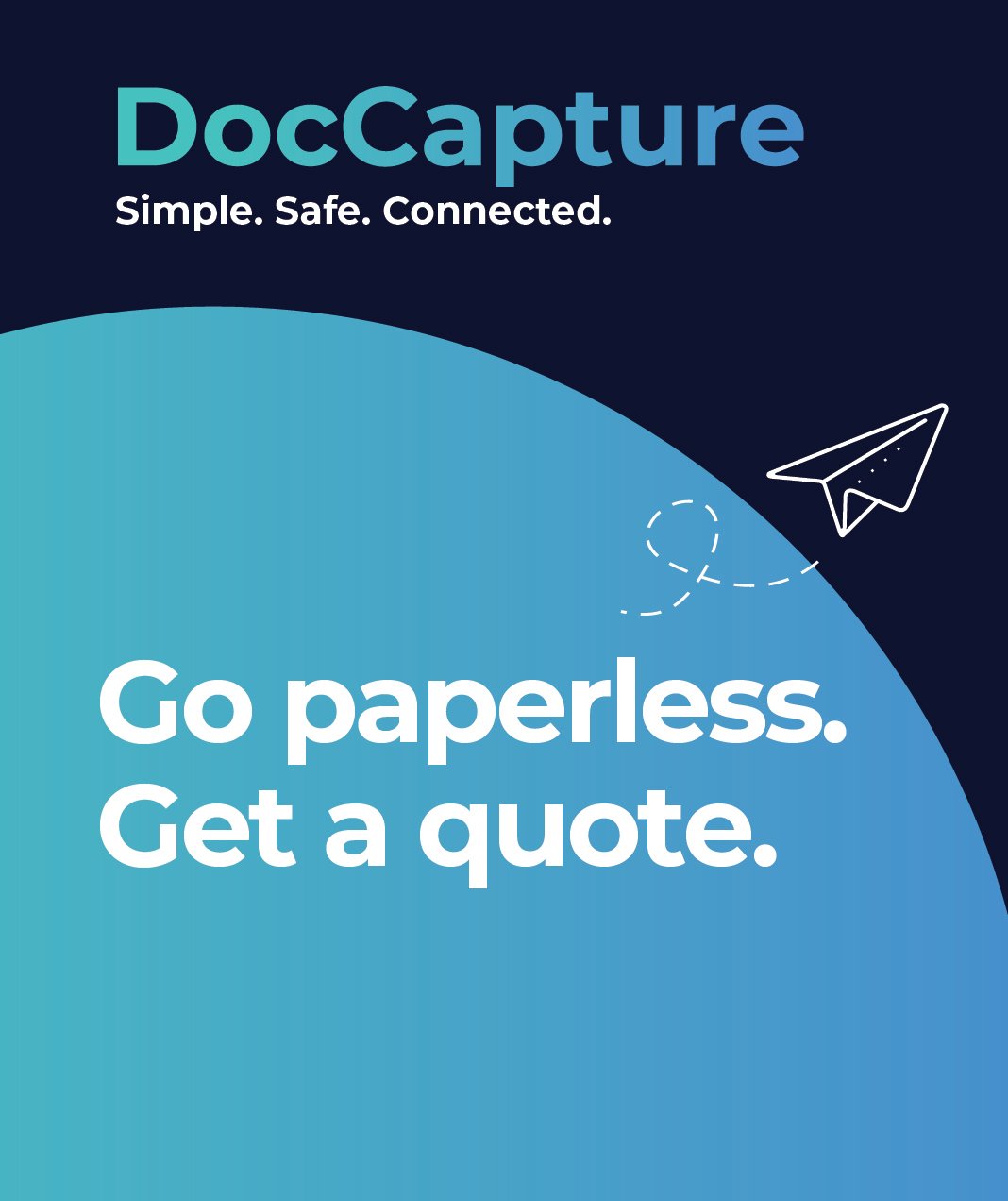Enhancing Donor Reporting and Transparency with Digital Records
Table of contents
Nonprofits face growing pressure from donors, grant agencies, and stakeholders to provide transparent, accurate, and timely impact reports. These reports not only demonstrate accountability but also help secure ongoing funding and strengthen relationships with supporters. Yet, for many organizations, the reporting process is a logistical headache. Paper records, scattered files, and outdated storage systems lead to frustrating delays, incomplete data, and increased compliance risks—problems that can undermine donor confidence.
The solution? Digital document scanning and secure recordkeeping. By converting paper archives into easily searchable digital files, nonprofits can streamline reporting, improve access to historical data, and meet regulatory requirements with confidence. Beyond efficiency, this transformation empowers staff to focus on their mission while giving donors and funders the transparency they demand.
In this article, we’ll explore how going digital can simplify donor reporting, enhance trust, and drive long-term sustainability for your organization.
The Challenges Nonprofits Face with Donor Reporting
For many nonprofits, donor reporting is a resource-intensive process complicated by outdated recordkeeping systems. Organizations often rely on decades of paper files, boxed archives, and scattered spreadsheets—all of which create roadblocks when preparing the detailed reports that donors and grant agencies expect. Retrieving historical information can take days, if not weeks, especially when files are stored offsite or mislabeled.
This inefficiency becomes even more challenging during audits, grant renewals, or compliance checks, when stakeholders require fast, verifiable data. Staff already stretched thin must dedicate valuable time to searching through filing cabinets instead of focusing on programs and fundraising.
Beyond the time burden, incomplete or missing records can create serious compliance risks, threatening funding and eroding donor confidence. In today’s environment, where transparency drives donor trust, relying solely on physical archives is no longer sustainable.
Transitioning to a digital document management strategy—like those outlined in Document Scanning for Nonprofits and Scanning Nonprofit Records—can resolve these pain points by ensuring every document is organized, secure, and instantly accessible when reporting season arrives.
How Digital Records Solve These Problems
Switching from paper files to digital document management is more than just a convenience—it’s a strategic move that helps nonprofits overcome the reporting challenges that slow them down and put funding at risk. By scanning and digitizing archived donor files, grant records, and program documentation, nonprofits unlock a series of operational benefits that make reporting faster, more accurate, and more impactful.
Instant Access to Historical Records
When donor or grant reports require historical context, time-consuming file searches can delay submission. Digitized documents allow staff to locate any record within seconds through keyword searches, regardless of its age or origin. This level of accessibility supports faster reporting cycles and gives decision-makers the ability to identify trends and measure long-term impact.
Simplified Compliance and Audit Readiness
Regulatory requirements and grant audits often demand quick, verifiable access to financial and program records. With secure digital archives, nonprofits can easily meet these demands, reducing stress on staff and eliminating the risk of missing or incomplete documentation. For a deeper dive into how scanning supports compliance, see Scanning Nonprofit Records.
Streamlined Workflows That Save Staff Time
By integrating scanned records into a searchable database, staff can generate donor reports and grant updates without digging through boxes or duplicating work. This efficiency frees employees to focus on program development and fundraising—activities that drive mission success.
Enhanced Security for Sensitive Data
Physical files are vulnerable to damage, loss, and unauthorized access. Digital recordkeeping with secure access controls protects sensitive donor and financial information while ensuring compliance with data privacy standards.
For nonprofits exploring a transition, DocCapture provides tailored solutions like those outlined in Document Scanning for Nonprofits and insights from Nonprofits & Digital Transformation: Maximizing Mission Impact. Together, these tools empower organizations to meet the rising demands of donors and grant agencies with confidence and ease.
Real Impact: Improving Donor Transparency & Satisfaction
When nonprofits digitize their records, the benefits extend far beyond operational efficiency—they gain the ability to create richer, more transparent donor impact reports that strengthen relationships with funders. With instant access to both current and historical records, organizations can craft reports that include data-driven insights, visual trends, and multi-year comparisons—elements that make impact stories more compelling.
For example, by leveraging scanned donor files and program documentation, staff can quickly pull metrics on funding utilization, program reach, and year-over-year progress. This allows nonprofits to demonstrate not just how funds were used, but how outcomes have improved over time—a key factor in building trust with grant agencies and major donors.
Additionally, digital records reduce the risk of errors or omissions that can occur when working with scattered paper files. Donors and auditors alike gain confidence knowing that every figure is backed by a verifiable, searchable document trail.
Transitioning to a digital system, as described in Document Scanning for Nonprofits, also accelerates reporting cycles, allowing nonprofits to deliver updates more quickly. This timeliness can be the difference between securing renewed funding and losing out to more transparent organizations.
Ultimately, digital transformation doesn’t just simplify reporting—it turns donor updates into a strategic advantage. For more insights, see Nonprofits & Digital Transformation: Maximizing Mission Impact.
Overcoming Common Barriers to Digital Transformation
Many nonprofit leaders hesitate to move away from paper records because of concerns over budget, technical complexity, and staff training. While these concerns are understandable, the reality is that modern document scanning and digital record solutions are both affordable and easy to implement—especially when partnered with specialists like DocCapture.
Digital transformation offers a clear return on investment (ROI) by eliminating the costs of physical storage, reducing staff hours spent on manual reporting, and preventing compliance-related fines or lost funding. These savings often outweigh the initial investment, making the transition a cost-effective decision.
Technological complexity is another common worry, but today’s solutions are designed with user-friendly interfaces and secure cloud storage. Staff don’t need IT expertise to retrieve files, generate reports, or maintain compliance. Plus, scanning partners like DocCapture provide end-to-end support, from secure document pickup to system setup and staff training.
For nonprofits looking to start small, strategies outlined in Document Scanning for Nonprofits and Nonprofits & Digital Transformation: Maximizing Mission Impact show how to phase digital adoption without disrupting daily operations.
The shift to digital isn’t just manageable—it’s essential for staying competitive and transparent in today’s funding landscape.
Conclusion
Streamline your nonprofit’s reporting, ensure compliance, and build donor trust with DocCapture’s secure document scanning solutions. Explore how our services can save your team time and costs—then fill out our “Get a Quote” form to get started at Document Scanning for Nonprofits.
Share this
You May Also Like
These Related Stories

Reducing Administrative Overhead in Nonprofits with Scanning Services

Improving Grant Compliance Through Digital Document Management

